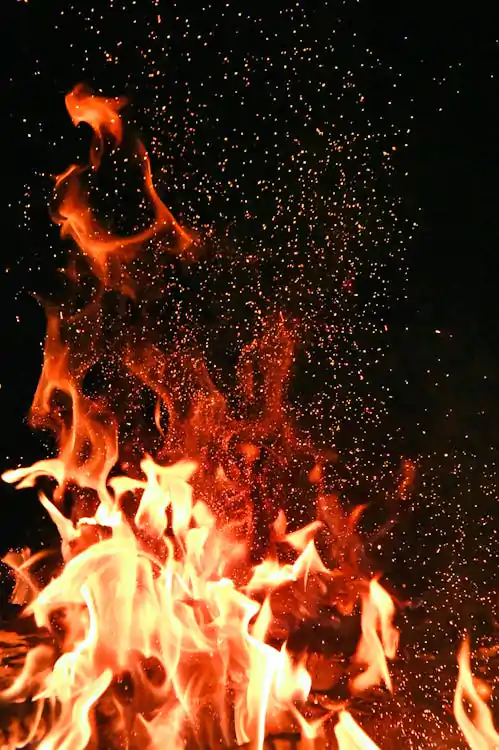Fire. It’s fast, scary, and dangerous. But what if we told you there’s a simple way to understand how it starts—and how you can stop it?
It all comes down to something called the Fire Triangle. This basic concept is used by firefighters, safety experts, and yes—restoration pros like us at ERX. If you want to know how fires really work, and how to stop them before they grow out of control, this guide is for you.
Let’s break it down in a way that’s simple, smart, and could even save your life one day.
What Is the Fire Triangle?
The Fire Triangle is made up of three things that every fire needs to burn:
🔥 Heat
🔥 Fuel
🔥 Oxygen
Take away just one of these, and a fire can’t survive.
It’s like a three-legged stool. Knock out one leg, and the whole thing collapses. Pretty cool, right? Let’s look at each part.
1. Heat: The Spark That Starts It All
Fires need a heat source to begin. This could be:
- A lit match or lighter
- A spark from a faulty outlet
- A hot stovetop
- Even direct sunlight on something flammable
Heat is what gets the fire going. And once it’s hot enough? It finds the next ingredient…
2. Fuel: What the Fire Eats
Fuel is anything that can burn. In your home, this could be:
- Wood
- Paper
- Curtains
- Furniture
- Grease on the stove
- Gasoline or cleaning chemicals
Fires don’t just burn wood—they’ll latch onto just about anything. That’s why clutter, oily rags, or piles of laundry near heaters can be risky.
3. Oxygen: The Invisible Fuel
Oxygen is all around us. And fire loves it. Once there’s a flame, oxygen feeds it and helps it grow. That’s why fires spread faster in open spaces with lots of airflow.
It’s also why you should never fan a grease fire. You’re just feeding it more oxygen!
How to Stop a Fire: Breaking the Triangle
Now that you know the three parts, here’s the good news: you can stop a fire by removing just one of them.
🔥 Remove Heat
Use water or a fire extinguisher (if it’s safe) to cool the flames and stop the fire’s heat source.
🔥 Remove Fuel
Move nearby items away from the flames. If something catches fire, smother it with a blanket to cut off fuel.
🔥 Remove Oxygen
Smother the fire with a lid or fire blanket. This works great for small kitchen fires—never use water on grease fires.
Different Fires, Different Approaches
Not all fires are the same. That’s why there are different types of fire extinguishers:
- Class A – Paper, wood, fabric
- Class B – Flammable liquids (gas, oil)
- Class C – Electrical
- Class K – Kitchen/grease
You need the right tool for the job. Using water on an electrical fire? That’s a recipe for disaster.
Common Fire Starters in Homes
Here’s where we get real. Most fires we deal with at ERX come from things like:
- Kitchen accidents (grease fires, left-on stoves)
- Electrical malfunctions (bad outlets or old wiring)
- Heaters placed too close to curtains or furniture
- Candles or matches left unattended
- Smoking materials not properly put out
And most of them? Totally preventable.
Fire Prevention Tips for Your Home
Want to make sure you’re not giving a fire the ingredients it needs? Try this:
✅ Keep flammable items away from stoves, heaters, and outlets
✅ Test your smoke alarms every month
✅ Don’t overload outlets or power strips
✅ Use candles with caution—never leave them burning unattended
✅ Store chemicals safely and away from heat
✅ Keep a fire extinguisher handy and know how to use it
What to Do If a Fire Starts in Your Home
If the fire is small and you feel safe:
- Try to smother it or use an extinguisher
- Call 911 immediately
- Evacuate if it spreads or gets too hot
- Don’t go back inside for anything
And once the fire is out, call ERX (Emergency Restoration Xperts) at (866)-217-7903. We specialize in fire damage restoration, smoke odor removal, and making homes feel like home again.
FAQs About the Fire Triangle and Fire Safety
Q: What’s the difference between the Fire Triangle and Fire Tetrahedron?
A: The tetrahedron adds a fourth element—the chemical reaction that keeps a fire going. But for most homeowners, the Fire Triangle is easier to understand and still super helpful.
Q: Can you use water on all fires?
A: Nope! Never use water on grease or electrical fires. Use a fire extinguisher or smother it instead.
Q: How often should I check my smoke alarms?
A: Test them monthly and replace the batteries at least once a year.
Q: Do small fires really cause serious damage?
A: Yes. Even a small fire can leave behind smoke, soot, and toxic residue that needs professional cleanup.
Q: What does ERX do after a fire?
A: We clean up soot, remove smoke smells, repair damage, and help you file your insurance claim. We’re with you every step of the way.
Final Thought from ERX
Fire doesn’t just happen out of nowhere. It needs heat, fuel, and oxygen—and understanding that can help you stop it in its tracks.
At ERX, we’ve helped thousands of families recover after fires. We’re here to help you prevent them, too.
If fire has touched your home, or you just want to be better prepared, give us a call at (866)-217-7903. We’re here for you—always.


